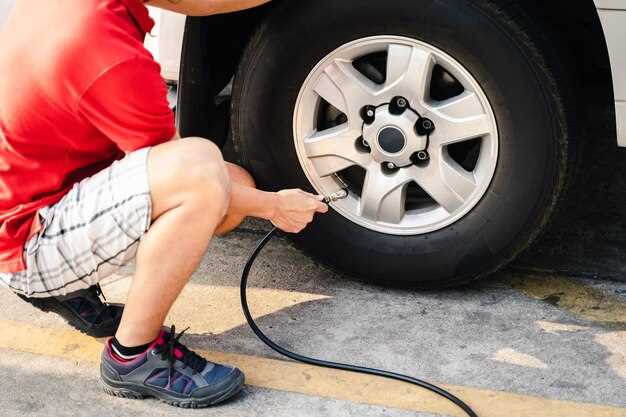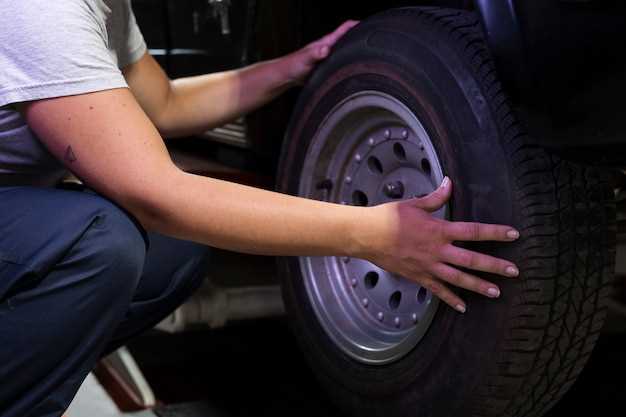
Having a spare tire mounted on your trailer is essential for ensuring that you are well-prepared for unexpected tire issues during your journeys. Whether you’re hauling equipment to a job site or enjoying a weekend getaway, a flat tire can lead to delays and frustrations. Installing a spare tire mount not only provides peace of mind but also enhances the overall safety and functionality of your trailer.
In this guide, we will walk you through the steps necessary to install a spare tire mount on your trailer. By following our detailed instructions, you’ll be able to secure a spare tire effectively, allowing for quick and easy access in case of emergencies. Proper installation involves understanding the types of mounts available, selecting the right location on your trailer, and using the correct tools for the job.
Before getting started, it’s important to gather the necessary materials and familiarize yourself with your trailer’s specifications. A well-installed spare tire mount can save you time and hassle in the long run, ensuring that your trailer remains reliable on the road. Let’s dive into the process and outline everything you need to know to complete this important installation.
Choosing the Right Spare Tire Mount for Your Trailer

Selecting the appropriate spare tire mount for your trailer is essential for safe and efficient transportation. First, consider the size of the spare tire you intend to carry. Tire sizes vary significantly, so ensure the mount you choose is compatible with the dimensions of your spare tire. It is crucial to check both the diameter and width to avoid any fitment issues.
Next, examine the material and construction of the spare tire mount. Opt for mounts made from high-quality, durable materials such as steel or aluminum. These materials provide better rust resistance and longevity, which is especially important if your trailer will be exposed to harsh weather conditions.
Another aspect to consider is the mounting style. Some mounts attach to the trailer’s frame, while others may be designed for vertical or horizontal installation. Assess your trailer’s design and space to determine which mounting style will work best. A well-placed mount ensures that the spare tire does not obstruct any trailer components or interfere with operations.
Weight capacity is also a critical factor. Ensure that the spare tire mount can support the tire’s weight and any additional load that might be carried. Check product specifications for weight ratings to guarantee reliability during transport.
Finally, consider ease of access. The spare tire mount should allow quick and straightforward removal of the tire in case of an emergency. Some mounts feature locking mechanisms for added security, which can be a beneficial feature to prevent theft.
Step-by-Step Guide to Installing the Spare Tire Mount

Installing a spare tire mount on your trailer is essential for ensuring you are prepared for any unexpected tire issues during your travels. Follow these step-by-step instructions for a successful installation.
Step 1: Gather Your Tools and Materials
Before you begin, make sure you have all necessary tools such as a wrench, drill, screws, and the spare tire mount kit. Check that the kit is compatible with your trailer and that the mount can accommodate the diameter of your tire.
Step 2: Choose the Right Location
Select a location on your trailer where the spare tire mount will be easily accessible and will not obstruct any existing equipment or loading areas. A common spot is at the front or on the side of the trailer.
Step 3: Mark the Drill Holes
Hold the tire mount in the chosen position and use a pencil or marker to outline where the holes for mounting will go. Ensure that the mount is level before marking to prevent alignment issues later.
Step 4: Drill the Holes
Using a drill, carefully create holes at the marked points on the trailer frame. Make sure to use a drill bit that matches the size of the screws provided in your spare tire mount kit.
Step 5: Attach the Mount to the Trailer
Align the spare tire mount with the drilled holes and insert screws through the mount into the holes. Use a wrench to tighten the screws securely, ensuring the mount is firmly attached to the trailer frame.
Step 6: Install the Spare Tire
Once the mount is securely in place, attach your spare tire to it. Make sure that the tire is properly aligned with the mount and fasten it according to the manufacturer’s instructions.
Step 7: Perform a Final Check
After installation, double-check all fasteners to ensure they are tight and secure. Evaluate the spare tire’s position to confirm it does not obstruct any operations of the trailer.
With these steps, you will have successfully installed a spare tire mount on your trailer, providing you peace of mind on your journeys ahead.
Maintaining Your Spare Tire and Mount for Longevity
To ensure the longevity of your spare tire and its mount on your trailer, regular maintenance is essential. Start by inspecting your spare tire periodically for any signs of wear, such as cracks, bulges, or low pressure. Keeping the tire properly inflated not only extends its lifespan but also ensures reliable performance when needed.
Next, examine the mount attached to your trailer. Check for corrosion or rust, particularly if your trailer is frequently exposed to moisture or salt. A clean and well-maintained mount is crucial for securely holding the spare tire in place. Use a wire brush to remove any rust and apply a suitable rust-inhibiting spray to protect the metal.
It’s also important to ensure that the mounting hardware, such as bolts and brackets, are tightly secured. Loose components can lead to movement or damage during travel. Regularly tightening these parts as part of your maintenance routine will help prevent issues.
Additionally, consider covering your spare tire with a protective cover. This helps shield it from UV rays and environmental elements, which can degrade the rubber over time. If your trailer is stored outdoors, a cover reduces exposure to harmful conditions.
Lastly, rotate your spare tire periodically with the other tires on your trailer. This practice helps to ensure even wear and maintain optimal performance if you ever need to use it. By following these maintenance tips, you can maximize the longevity of both your spare tire and its mount, ensuring they are ready when you need them the most.




